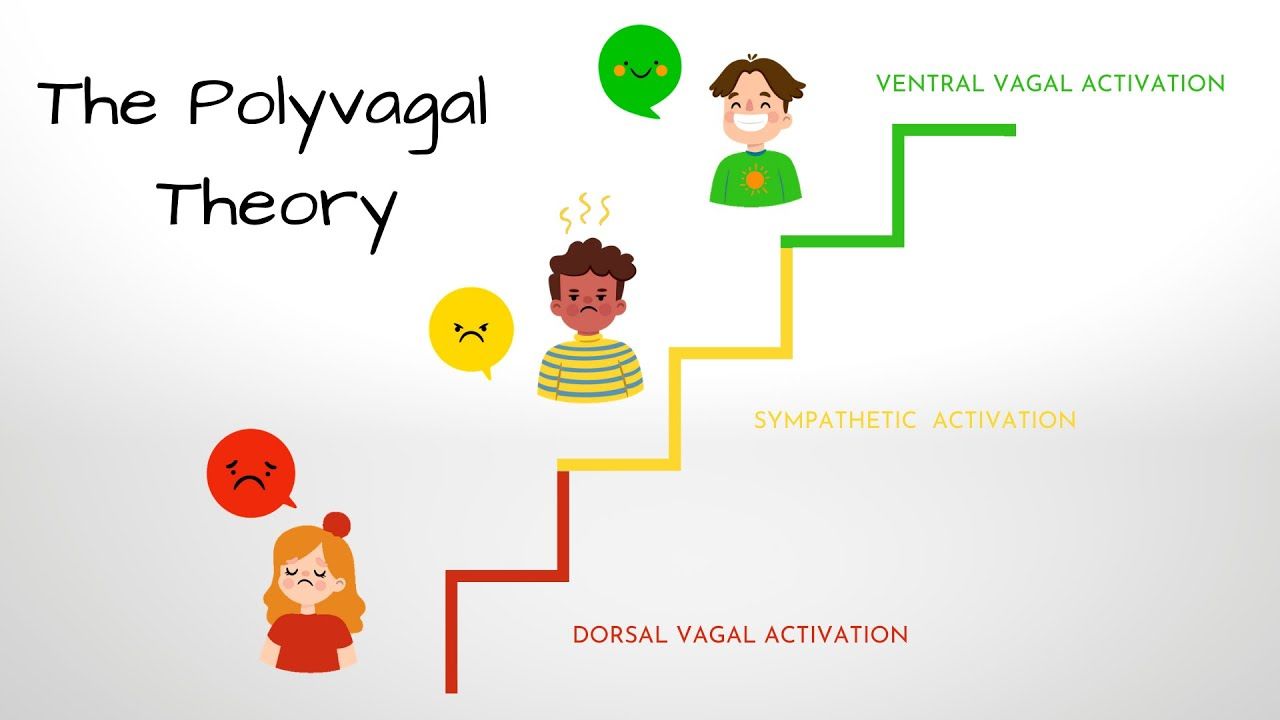Have you ever wondered why you or your child reacts to certain situations with fear, overwhelm, or calmness? Polyvagal theory offers fascinating insights into why we behave the way we do, explaining how our autonomic nervous system (ANS) shapes our psychological experiences.
The ANS is a part of our nervous system that works automatically, controlling essential body functions such as heart rate, breathing, digestion, and blood pressure—things we don’t consciously think about. But did you know the ANS doesn’t just respond to our internal body systems? It also reacts to how we perceive our environment, influencing how safe, stressed, or overwhelmed we feel.
Let’s explore some everyday examples to understand how this works.
How the Environment Affects the ANS
Fight or Flight
Imagine your child is at the dentist. While waiting, they notice another child crying, which makes them uneasy. The distinctive smell of the clinic might remind them of a previous visit when they felt uncomfortable or frightened by the medical tools.
In this situation, your child’s ANS might unconsciously activate their sympathetic nervous system, which is responsible for the "fight or flight" response. Physically, this could cause their breathing to become shallow, their heart rate to increase, and an adrenaline surge as their body prepares to respond to what it perceives as a stressful situation.
Shutdown During Overwhelming Situations
Now, consider a child who feels trapped in a difficult home environment, such as being exposed to ongoing arguments between their parents. In this case, they might experience an even deeper response to stress, particularly if they feel helpless or unable to escape.
The dorsal vagal system, a part of the parasympathetic nervous system, may kick in. This system is associated with a "freeze" or "shutdown" response—essentially the body’s last-resort survival mode. A child in this state might appear withdrawn, unresponsive, or emotionally numb, as their nervous system tries to protect them from the overwhelming situation.
Children with sensory processing challenges are particularly vulnerable to such responses because they may be more sensitive to environmental stimuli. This heightened sensitivity can make them more likely to feel overwhelmed and shut down.
Calm and Connected
Now, let’s look at a more positive scenario. Imagine your child playing dress-ups with their sibling in the comfort of your living room. The environment is safe, familiar, and filled with laughter. In this case, their ANS might activate the ventral vagal system, a part of the parasympathetic nervous system linked to feelings of safety and connection.
When the ventral vagal system is engaged, the child feels calm, socially connected, and happy. Their body is in "rest and digest" mode, which supports emotional regulation, bonding, and overall well-being.
Why Polyvagal Theory Matters
Polyvagal theory helps us understand how our bodies and minds work together to navigate different environments. Whether it’s stress at the dentist, overwhelm at home, or calm during play, our nervous system is constantly adapting to the cues around us—sometimes without us even realising.
By understanding these responses, we can create environments that help regulate our nervous system and that of our children. In the next blog, I’ll share practical tips for harnessing this knowledge to support emotional regulation—for yourself and your child.
This blog post is part one of a two-part series on Polyvagal theory.
